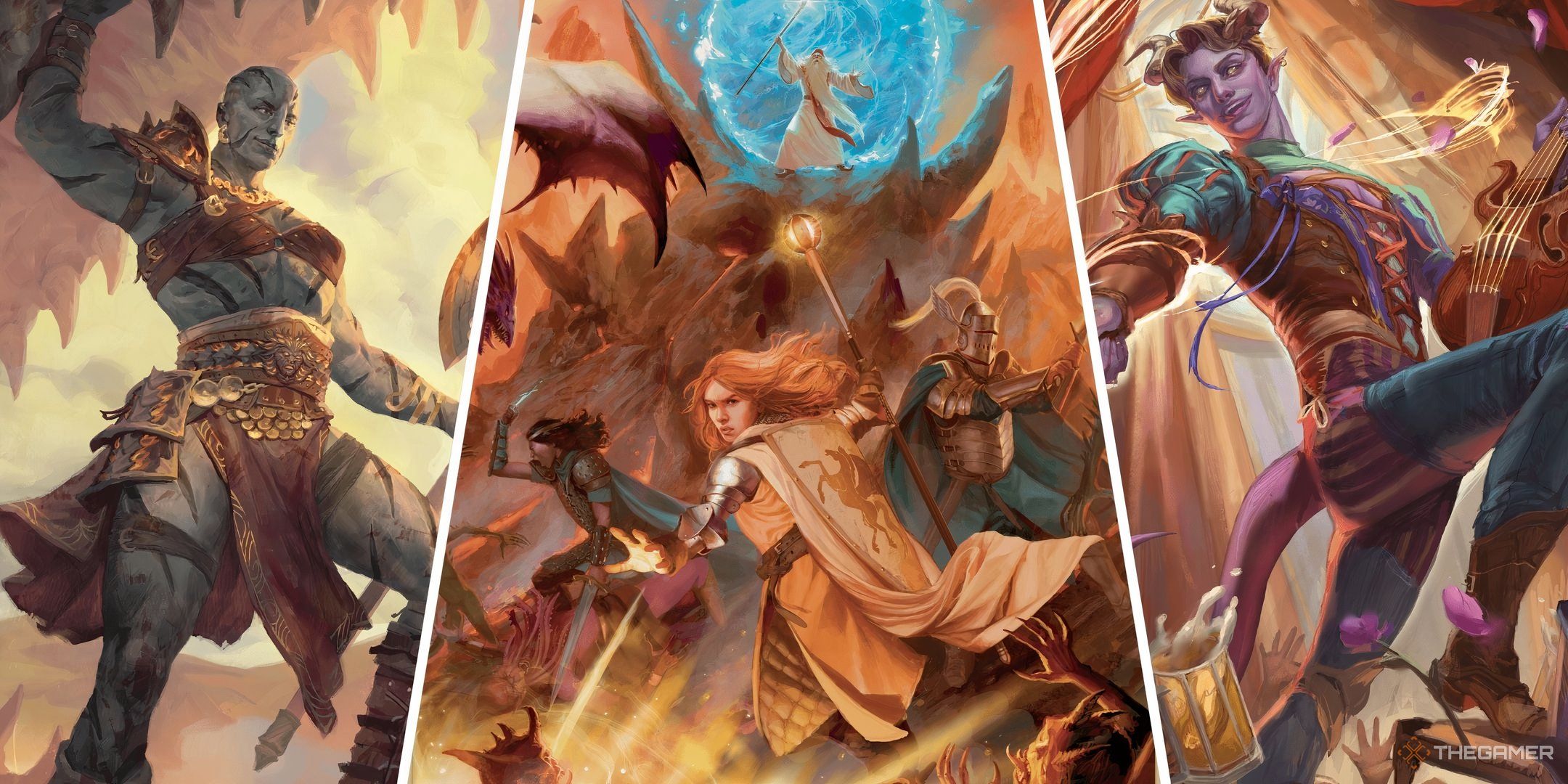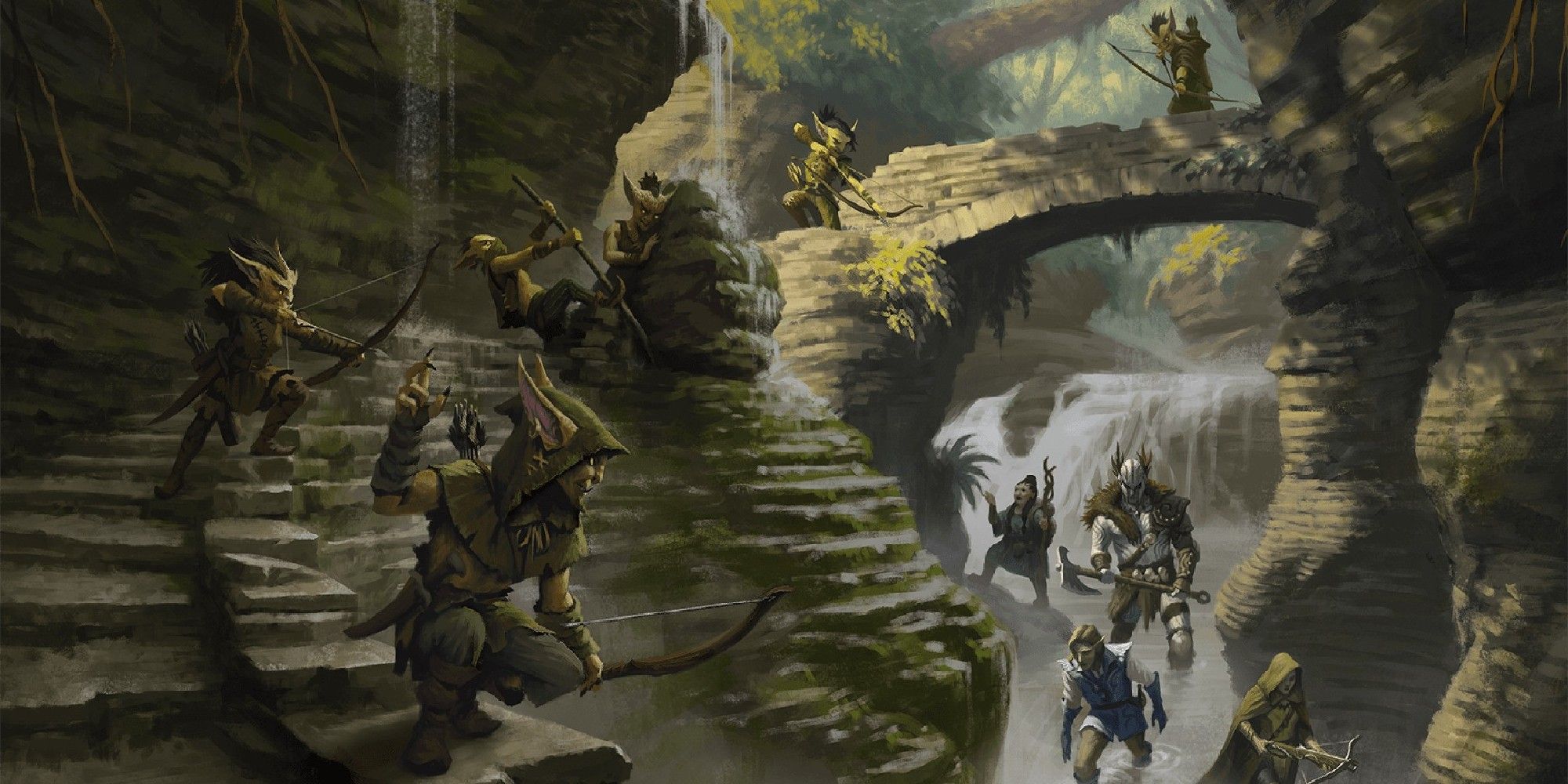In Dungeons & Dragons, 1st level spells are essentially glorified cantrips; while they can be useful, their effects are nothing spectacular. Second-level spells, on the other hand, are when things start to get interesting. This is when spells go from being an annoyance to the enemy to actually being able to turn the tide during a tough encounter.

Related
Dungeons & Dragons: 21 Best Battle Master Maneuvers, Ranked
Battle Master Maneuvers are critical in Dungeons & Dragons, and here’s a ranking of the best to defeat your DM with.
There are many second-level spells that would seem better placed in the higher spell levels due to the power and usefulness of their effects. In fact, many of the more famous spell effects of fantasy settings are mere second-level spells in D&D. Here are the most useful second-level spells in D&D – ranked.
Updated on December 10, 2024, by Alfredo Robelo: The release of the 2024 Player’s Handbook has everyone review their knowledge of spells, checking what’s changed and what is now viable. We’ve updated this list to include even more reliable second-level spells, so you know what to pick in your low and high-level adventures.
18
Melf’s Acid Arrow
Guaranteed Acid Damage
Melf’s Acid Arrow isn’t the most damaging spell on this list, but it is certainly one of the most reliable, since it deals damage even when it misses. If it hits, however, the target suffers 4D4 acid damage initially, and 2D4 more at the end of its following turn.
The acid damage type isn’t that easy to come by, and very few creatures are resistant to it, so this is always a good spell to have. It should also be your opener spell, since the extra damage might be wasted on a creature that is already close to death.
17
Levitate
Early Access To Flight
The Dungeons & Dragons rules tend to be careful when it comes to players flying, particularly on the earlier levels. At later stages, it makes sense for players to be flying around, but the early stages of play are meant for beginners who shouldn’t be adding another dimension to puzzles and combat.
Still, if you are a veteran player willing to use verticality to your advantage, Levitate is a versatile spell for that very purpose. You can only move up or down with the spell (unless you grab something to move forward), but it should be enough to sneak around a roof unnoticed, and you can also cast Levitate on a hostile target to get them out of a fight.
16
Flame Blade
Ideal For Melee Casters
Flame Blade is a spell available for druids and sorcerers, although the latter will see the most use for it. This is because the spell allows for a reliable melee build of the sorcerer class, something not often seen but that can deal some decent damage.
You can even attack on the very turn you summon the Blade, since casting it is just a bonus action. It deals 3D6 plus your spellcasting modifier in damage, and you can even upcast it to deal one more D6 for each spell slot above the second. The Blade also sheds bright light around you, something that can be key for species that don’t have darkvision.
15
Alter Self
Adapt To Your Environment
Although it was a little more useful in previous editions (like many spells), Alter Self is still one of the more useful low-level spells an arcane caster can memorize. This spell not only allows the caster to alter their appearance, but can be used to make useful changes to the caster’s physiology. Using this spell, the caster can grow gills and webbed digits for underwater breathing and movement.

Related
Dungeons & Dragons: 10 Tips For Better Character Creation
Don’t fall back on the mundane; make better characters for your next campaign.
It can also be used to grow sharp claws or teeth to attack an opponent – these are considered magical weapons as well. Previous editions allowed the caster to grow wings; making this the lowest level spell that allowed the caster to fly (albeit awkwardly). This was removed in 5th edition, but there’s no harm in asking the DM if this can still be done.
14
Web
Trap Enemies And Set Them Ablaze
Mainly useful for crowd control or if you need to buy a bit of time, Web affects all creatures within any 20-foot square the caster chooses. The spell works in three dimensions if the caster is in a small, enclosed space. It doesn’t do any damage, which works out fine if you or another member of your party gets caught up in it by accident.
If you have a spell similar to Aganazzar’s Scorcher handy, you can light that flammable filigree for up to cause 2d4 fire damage to any creatures trapped in it for one round.
13
Mirror Image
Confuse Your Opponent
Mirror Image is another spell that was significantly better in previous editions but is still extremely useful in the 5th edition. This spell creates three illusionary duplicates of the caster; which move around to conceal the true location of the caster.
Before an opponent can hit the caster, they must roll a d20 to determine if they attack a duplicate instead (previous versions made the first attack on the caster automatically miss). If a duplicate is hit, it disappears. This spell is invaluable to a low-level wizard or sorcerer, mainly due to them having a less than ideal armor class.
12
Knock
Open Simple Locks
A handy spell indeed, but regulated closer to the bottom of the list as it’s mostly a situational ability. Characters who are dual classed as spellcasters and thieves will get the most use out of Knock, but it’s also useful on more sophisticated locks and magical barriers in places like dungeons. Too bad Gandalf didn’t have his Knock spell handy at the gates of Moria.
Unlike lower-level spells and cantrips that merely open simple locks or remove magic, Knock works on both magical and mundane locks whether they be fixed on doors, manacles, or treasure chests.
11
Detect Thoughts
Know What They Think
Detect Thoughts is useful in virtually any situation, whether it be a tense dinner with the local lord or a skirmish with a country bandit in his lair. The subject of the conversation at the time guides the train of thought, making Detect Thoughts indispensable for interrogations but less useful for random eavesdropping.

Related
With that in mind, however, the effect of this spell is on an area the caster chooses, not a creature or a person specifically. Therefore, casting this spell in a certain area can reveal a hidden creature or person provided that they have an intelligence of 3 or more and are within a 30-foot radius.
10
Aganazzar’s Scorcher
Fire In A Straight Line
In a confined area like a hallway, this is perhaps the best damage-dealing second level spell. Aganazzar’s Scorcher is basically a flamethrower that extends 30’ from the caster for one turn; previous editions had this effect last two turns (but one is actually better).
Anyone caught in the path of this flame takes 3d8 fire damage. If the target(s) pass a dexterity save, the damage is halved. Like many spells in 5e, Aganazzar’s Scorcher is scalable – every spell slot this occupies above second adds a 1d8 to the damage. The caster must be careful to make sure there aren’t any party members in the line of fire, as the spell will hurt them as well.
9
Cloud Of Daggers
Slice And Dice Them
Cloud of Daggers is a very potent (for second level) spell that deals damage in a 5’ area cube. The whirling daggers deal 4d4 points of damage to any being that enters or begins their turn in this 5’ cube area. As far as second-level spells go, this is a respectable amount of damage, and the damage is also scalable.
The damage increases by 2d4 for every spell slot the caster uses to memorize this spell beyond second. As with Aganazzar’s Scorcher, it is important to make sure there aren’t any party members in the area of effect. This spell works great when used in conjunction with the spell at the #5 spot on this list.
Scorch Their Armor
Perhaps an overpowered spell for level 2, but it’s limited to Druids and Bards which keeps it from being more mainstream. As the name indicates, this spell works on any kind of manufactured metal, so it’s often used to target armor and weapons, but creative spellcasters can also cast it on sewer grates or prison bars.
The spell causes 2d8 fire damage to anything that touches it in the first round, and the caster is able to use a bonus action to repeat the damage in the next round. The extra-long range of 60 feet is a big advantage.
7
Spiritual Weapon
Gain A Simple Ally
In previous editions of D&D, this spell was called Spiritual Hammer, but the effects are pretty much the same. This spell allows the caster to call forth a weapon made of energy that does not need to be held (it acts in a manner similar to a dancing sword).

Related
Dungeons & Dragons: 23 Most Powerful Gods, Ranked
In the world of Dungeons & Dragons, even gods have their own hierarchy. These are the major gods of D&D, ranked according to power.
The caster can direct the weapon to strike at a target within 5’ and deals 1d8 + the caster’s spell ability modifier; the damage is also scalable. The caster can use a bonus action to move the weapon up to 20’ and strike at a second target. The best part of this spell is that it doesn’t require concentration to maintain, meaning the caster is free to use their bonus action each turn.
6
Hold Person
Don’t Let Them Act
This useful spell does exactly what the title states – it lets the caster paralyze the target. This spell can end a fight immediately, leaving the opponent prone for an easy victory. The base spell only works on one target (previous editions allowed for up to four), but this version is scalable.
Every spell slot used beyond second allows the caster to target an additional person. The target(s) is/are allowed a wisdom saving throw to avoid the effects; so this isn’t as useful against strong opponents who will probably pass their saving throw. This spell is also handy if a party member is being controlled and the party wishes to harmlessly incapacitate him/her.
5
Dragon’s Breath
The Fury Of Dragonkind
This is probably the best damage-dealing second-level spell for the 5th edition (so far). Dragon Breath deals 3d6 points of damage to everything in a 15’ cone; it is also scalable and deals an additional 1d6 for every spell slot it occupies beyond second.
This isn’t the best damaging spell because it does more damage, but because the caster can choose between different damage types. This allows the spell to have a maximum effect against targets that are weak against a particular damage type. The choices of damage type are; fire, lightning, cold, acid, or poison. This power of this spell can also be imbued to a willing recipient.
4
Silence
No Spells Allowed
It doesn’t just take away the ability to cast spells. Like the majority of spells that are rated the most popular and useful, Silence can be used for either offense or defense. It’s actually an AOE spell that affects a 20-foot radius, and not only is all of the speech removed from this place but all sound entirely.
Creatures within the sphere can neither hear nor speak, but they are immune to thunder damage for the spell’s duration. Since the spell doesn’t do any damage, it can be used to hide or protect a party as much as harm them.
3
Healing Spirit
Create An Area Of Healing
Healing Spirit is the best healing spell available at second level. This spell doesn’t directly heal a person but summons a spirit that creates a zone of healing within 5’ of its location. The spell heals 1d6 points of damage to whoever is in the zone, is scalable, and lasts for one minute.

Related
This is an excellent spell to set up around a choke point guarded by the party’s front line fighters; this will provide constant healing during the battle. The spirit can be moved up to 30’ a turn by the caster using a bonus action. The only drawback to this spell is that it requires concentration to maintain.
2
Phantasmal Force
A Ghostly Trick
This spell creates an illusion in the target’s mind; the illusion can include visual, auditory, and tactile properties. The uses for this spell are nearly infinite; the caster could create an illusionary bridge over a chasm that tricks an opponent into trying to cross, only to fall to their death.
A clever tactic with this spell is to use it to simulate the casting of a damage-dealing spell, like Cloud of Daggers, one turn after casting the real spell. A DM will be hard-pressed to justify the target disbelieving this effect after just suffering damage from a real Cloud of Daggers. It won’t do as much damage as the real spell, but it can still be used to damage an opponent if the caster is out of offensive spells.
1
Invisibility
Hide In Plain Sight
This spell should really be at a higher level than second considering what it does. Turning invisible is one of the most useful abilities in D&D. This spell could allow a thief to deliver an easy and decisive sneak attack. It is great for making a safe retreat if the caster becomes separated from the party during a fight.
It could allow the party’s cleric to safely reach a downed party member in the thick of a chaotic melee. One of the best aspects of this spell is its duration of one hour; unless the spell is ended sooner by the recipient attacking or casting a spell.






























Leave a Reply